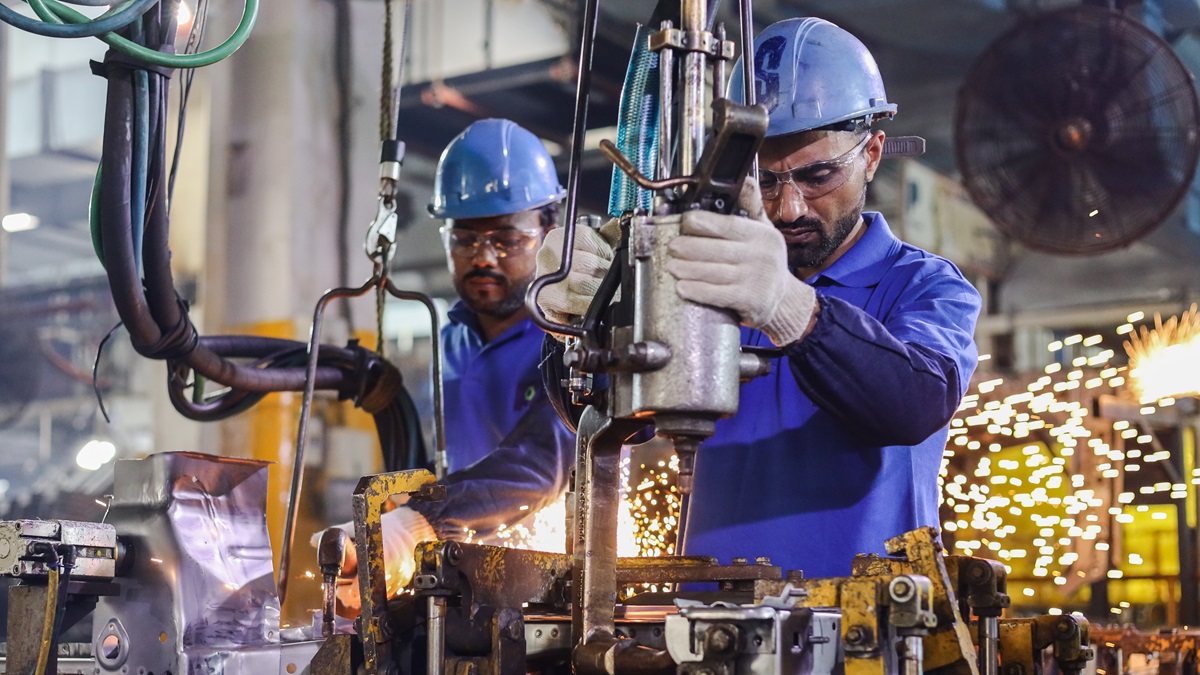Global crises fracturing foreign investment, impacting developing economies
Global crises fracturing foreign investment, impacting developing economies UNCTAD



UN Trade and Development calls for innovative investment strategies to foster inclusive and sustainable economic growth.
Launched by UN Trade and Development (UNCTAD) on 23 April, the report entitled “Global economic fracturing and shifting investment patterns” examines the complex landscape of global foreign direct investment (FDI).
The report sheds light on ten transformational shifts in investment priorities across industries and regions, shaped by trends in global value chains (GVCs) and geopolitical dynamics, and emphasizes the necessity of integrating sustainability and development into investment strategies.
Three diverging trends in global foreign investments
UN Trade and Development highlights key FDI trends that have evolved over the past two decades.
Firstly, the growth of FDI and global value chains (GVCs) is no longer aligned with GDP and trade growth, indicating a significant shift in the global economy.
Since 2010, global GDP and trade have continued to expand at an annual average of 3.4% and 4.2% respectively, even amidst rising trade tensions.
By contrast, FDI growth has stagnated near 0%, in the midst of rising protectionism, growing geopolitical tensions and increased investor caution.
Additionally, there is a growing gap between the manufacturing and services sectors, with investments increasingly leaning towards services.
From 2004 to 2023, the share of cross-border greenfield projects in the services sector grew from 66% to 81%.
Simultaneously, FDI in manufacturing was stagnating for two decades before going down significantly, with a negative compound annual growth rate of -12% in the three years after the outbreak of the Covid-19 pandemic.
The decline in manufacturing has severely impacted smaller economies, hindering their ability to participate in global production, upgrade production methods and adopt new technologies.
Finally, the report highlights that the geography of global FDI has been significantly re-shaped by China’s reduced role as a recipient country.
Multinational corporations have shown diminishing enthusiasm for launching new investments in China. However, the country still holds a dominant position in global manufacturing and trade, which signifies a transformation in its international production model.
From divergence to fracturing
The transition from divergence to fracturing in global investment patterns emerges as a key concern.
Recent global conflicts and crises have disrupted usual investment patterns, leading to unstable investment relationships and limited chances to benefit from strategic diversification.
The report cautions that investment decisions are now more frequently influenced by geopolitical factors, at times overriding economic determinants, complicating standard approaches to investment promotion and hindering FDI-based development.
Sustainability push but smaller developing countries increasingly bypassed
Despite progress toward sustainability and the Sustainable Development Goals, the impacts on developing nations are mixed.
The growing trend of FDI to environmental technologies offers new opportunities but fails to fully address the slowdown in other industries, specially affecting developing and least developed countries, increasing the vulnerability of their economies.
The expansion of the services sector mainly benefits larger developing economies that can effectively compete, creating an imbalance that leaves smaller ones at a disadvantage, accentuating disparities and underscoring the need for policies that provide all developing countries equal opportunities.
Implications for development
The narrowing focus of FDI, both geographically and sectorally, sidelines smaller and less developed nations, heightening their economic fragility. Furthermore, traditional reliance on manufacturing investments no longer guarantees sustained growth and economic development.
Call to bridge investment gaps
In response to the pressing need to bridge investment disparities across sectors and regions, UN Trade and Development is calling for immediate action to ensure that the benefits of investment are distributed more equitably and aligned with overarching developmental objectives.
Policy recommendations from UN Trade and Development:
- Urge developing countries to revise their economic development strategies.
- Highlight the importance of policies that attract and make the most of FDI, promoting investment in Sustainable Development Goals.
- Call on global policymakers, business leaders, and development agencies to enhance collaboration at global and regional level and work towards a more open and fairer global investment environment.
SDGs, Targets, and Indicators
| SDGs | Targets | Indicators |
|---|---|---|
| SDG 8: Decent Work and Economic Growth | Target 8.1: Sustain per capita economic growth in accordance with national circumstances and, in particular, at least 7 percent gross domestic product growth per annum in the least developed countries | No specific indicators mentioned in the article |
| SDG 9: Industry, Innovation, and Infrastructure | Target 9.1: Develop quality, reliable, sustainable and resilient infrastructure, including regional and transborder infrastructure, to support economic development and human well-being, with a focus on affordable and equitable access for all | No specific indicators mentioned in the article |
| SDG 10: Reduced Inequalities | Target 10.2: By 2030, empower and promote the social, economic and political inclusion of all, irrespective of age, sex, disability, race, ethnicity, origin, religion or economic or other status | No specific indicators mentioned in the article |
| SDG 12: Responsible Consumption and Production | Target 12.2: By 2030, achieve the sustainable management and efficient use of natural resources | No specific indicators mentioned in the article |
| SDG 17: Partnerships for the Goals | Target 17.16: Enhance the global partnership for sustainable development, complemented by multi-stakeholder partnerships that mobilize and share knowledge, expertise, technology and financial resources, to support the achievement of the sustainable development goals in all countries, in particular developing countries | No specific indicators mentioned in the article |
1. Which SDGs are addressed or connected to the issues highlighted in the article?
SDG 8: Decent Work and Economic Growth
The article discusses the need for inclusive and sustainable economic growth, which aligns with SDG 8’s focus on promoting sustained, inclusive, and sustainable economic growth, full and productive employment, and decent work for all.
SDG 9: Industry, Innovation, and Infrastructure
The article highlights the shifts in global foreign direct investment (FDI) and global value chains (GVCs), indicating changes in industry and infrastructure. SDG 9 aims to build resilient infrastructure, promote inclusive and sustainable industrialization, and foster innovation.
SDG 10: Reduced Inequalities
The article mentions the imbalance in benefits from FDI, with larger developing economies benefiting more than smaller ones. This relates to SDG 10’s goal of reducing inequalities within and among countries.
SDG 12: Responsible Consumption and Production
The article emphasizes the importance of integrating sustainability and development into investment strategies. This aligns with SDG 12’s focus on promoting responsible consumption and production patterns.
SDG 17: Partnerships for the Goals
The article calls for collaboration among global policymakers, business leaders, and development agencies to bridge investment disparities. This relates to SDG 17’s emphasis on partnerships for the achievement of the sustainable development goals.
2. What specific targets under those SDGs can be identified based on the article’s content?
Target 8.1: Sustain per capita economic growth in accordance with national circumstances and, in particular, at least 7 percent gross domestic product growth per annum in the least developed countries
The article highlights the stagnation of FDI growth amidst rising protectionism and geopolitical tensions, indicating a need to sustain economic growth in the least developed countries.
Target 9.1: Develop quality, reliable, sustainable and resilient infrastructure, including regional and transborder infrastructure, to support economic development and human well-being, with a focus on affordable and equitable access for all
The article mentions the shifts in global value chains and the growing gap between the manufacturing and services sectors, indicating a need for the development of sustainable and resilient infrastructure to support economic development.
Target 10.2: By 2030, empower and promote the social, economic and political inclusion of all, irrespective of age, sex, disability, race, ethnicity, origin, religion or economic or other status
The article highlights the imbalance in benefits from FDI, with larger developing economies benefiting more than smaller ones. Target 10.2 aims to promote the social, economic, and political inclusion of all individuals, regardless of their status.
Target 12.2: By 2030, achieve the sustainable management and efficient use of natural resources
The article emphasizes the importance of integrating sustainability into investment strategies, indicating a need to achieve sustainable management and efficient use of natural resources.
Target 17.16: Enhance the global partnership for sustainable development, complemented by multi-stakeholder partnerships that mobilize and share knowledge, expertise, technology and financial resources, to support the achievement of the sustainable development goals in all countries, in particular developing countries
The article calls for collaboration among global policymakers, business leaders, and development agencies to bridge investment disparities, aligning with the target of enhancing global partnerships for sustainable development.
3. Are there any indicators mentioned or implied in the article that can be used to measure progress towards the identified targets?
No specific indicators are mentioned or implied in the article that can be used to measure progress towards the identified targets.
SDGs, Targets, and Indicators
| SDGs | Targets | Indicators |
|---|---|---|
| SDG 8: Decent Work and Economic Growth | Target 8.1: Sustain per capita economic growth in accordance with national circumstances and, in particular, at least 7 percent gross domestic product growth per annum in the least developed countries | No specific indicators mentioned in the article |
| SDG 9: Industry, Innovation, and Infrastructure | Target 9.1: Develop quality, reliable, sustainable and resilient infrastructure, including regional and transborder infrastructure, to support economic development and human well-being, with a focus on affordable and equitable access for all | No specific indicators mentioned in the article |








